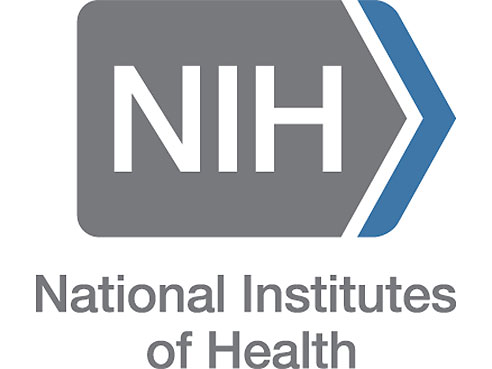 Physician scientists at 22 consortia, including investigators at the University of Alabama at Birmingham, will collaborate with representatives of 98 patient advocacy groups to advance clinical research and investigate new treatments for patients with rare diseases.
Physician scientists at 22 consortia, including investigators at the University of Alabama at Birmingham, will collaborate with representatives of 98 patient advocacy groups to advance clinical research and investigate new treatments for patients with rare diseases.
The collaborations are made possible through awards by the National Institutes of Health — totaling about $29 million in fiscal year 2014 funding — to expand the Rare Diseases Clinical Research Network, which is led by NIH’s National Center for Advancing Translational Sciences.
There are several thousand rare diseases, and only a few hundred have treatments available. Combined, rare diseases affect an estimated 25 million Americans. Some obstacles to developing rare disease treatments include difficulties in diagnosis, widely dispersed patients and scientific experts, a perception of high risk, and a lack of data from natural history studies, which follow a group of people with a specific medical condition over time.
“NCATS seeks to tackle these challenges in an integrated way by working to identify common elements among rare diseases,” said NCATS Director Christopher P. Austin, M.D. “The RDCRN consortia provide a robust data source that enables scientists to better understand and share these commonalities, ultimately allowing us to accelerate the development of new approaches for diagnosing and treating rare diseases.”
| “The RDCRN consortia provide a robust data source that enables scientists to better understand and share these commonalities, ultimately allowing us to accelerate the development of new approaches for diagnosing and treating rare diseases.” |
UAB is involved with clinical research in two different projects. The first deals with three disorders of the nervous system: Rett syndrome, MECP2 duplication disorder and RTT-related disorders, under the direction of Alan Percy, M.D., medical director of the UAB Civitan International Research Center. These conditions strike previously healthy-seeming children — usually girls for RTT and boys for MECP2 duplication disorder — early in their lives and can lead to seizures, difficulty with fine motor control and walking, and intellectual disability. This project, which has been funded by NIH since 2003, is preparing to launch clinical trials in the coming months.
In the second project, UAB will be part of a 10-member group of medical centers headed by Boston Children’s Hospital in studying three rare genetic syndromes, tuberous sclerosis complex, Phelan-McDermid syndrome and PTEN hamartoma tumor syndrome, which often cause autism spectrum disorder and intellectual disability. Martina Bebin, M.D., professor of neurology, is the lead investigator at UAB for the $6 million, five-year study. The ultimate goal is to launch clinical trials of new treatments and develop biomarkers that can be used to monitor treatment effectiveness for the three rare syndromes, and possibly for broader groups of ASD/ID patients.
The Rare Diseases Clinical Research Network’s efforts take the form of a natural history study with three major goals: identify and understand the core clinical features of each disorder, identify factors that can modify the severity of the disorders, and understand the relationship between patients’ symptoms and their brain imaging and electroencephalography alterations.
Many patients with rare diseases often struggle to obtain an accurate diagnosis and find the right treatments. In numerous cases, RDCRN consortia have become centers of excellence for diagnosing and monitoring diseases that few clinicians see on a regular basis.
The RDCRN was established in 2003 by the NIH Office of Rare Diseases. NCATS now oversees the program, which is designed to advance medical research on rare diseases by facilitating collaboration, study enrollment and data sharing. Since the program’s launch, nearly 29,000 participants have been enrolled in network clinical studies. Currently, the network is composed of about 2,600 researchers, including NIH scientific program staff, academic investigators and members of 98 patient advocacy groups. Ninety-one studies are underway.
With the new awards, scientists at the 22 RDCRN consortia will conduct a minimum of two multisite clinical studies, including one longitudinal natural history study for a group of at least three related rare diseases. The RDCRN Data Management and Coordinating Center will continue to support the consortia by providing technologies and tools to collect and analyze standardized clinical research data, as well as supporting study design.
“The real strength of the collaboration among RDCRN consortia is the power to obtain high-quality data,” said Pamela M. McInnes, DDS, acting director of the NCATS Office of Rare Diseases Research and NCATS deputy director. “These data form an important base to better define patient populations, attract industry partners, share information on best practices and advance treatment options for the rare disease patient community.”
Direct involvement of patient advocacy groups in operations and strategy is a major feature of the network, and each consortium partners with relevant patient advocacy groups. Network consortia also establish training programs for clinical investigators interested in rare diseases research, provide information to the public about the rare diseases that they study, and enable proof of concept in clinical research studies.
Learn more about the six new and 16 continuing consortia as well as the DMCC online.
Funding and scientific oversight for the RDCRN are provided by NCATS and 10 NIH components: the Eunice Kennedy Shriver National Institute of Child Health and Human Development; the National Cancer Institute; the National Heart, Lung and Blood Institute; the National Institute of Allergy and Infectious Diseases; the National Institute of Arthritis and Musculoskeletal and Skin Diseases; the National Institute of Dental and Craniofacial Research; the National Institute of Diabetes and Digestive and Kidney Diseases; the National Institute of Mental Health; the National Institute of Neurological Disorders and Stroke; and the Office of the Director. In addition, patient advocacy groups provide funds for many of the projects.